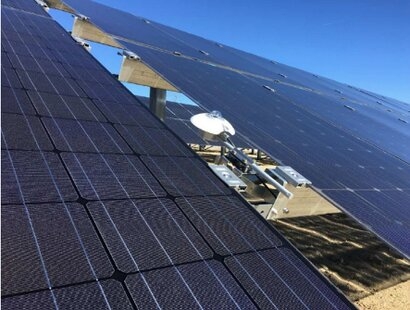
Solar developers, asset owners and independent engineers who take the initiative by adopting best practices to albedo assessment early stand to make significant gains in a competitive market finds Solargis. The company has released a two-part report analysing where current industry understanding of albedo needs improvement – and outlining a best practice approach to albedo measurement.
Project developers are increasingly turning to bifacial modules to maximise the production of their sites – with the sector set to grow by a factor of ten between 2019-2024. As bifacial module prices draw closer to monofacial, the technology has proliferated globally and helped drive a new wave of cost reductions for solar asset owners. In key growth markets, the combination of bifacial modules and sun tracker technology has been behind record low bids. These bids have, in turn, put pressure on margins – requiring greater confidence in energy yield predictions.
However, Solargis has found that the industry’s understanding of albedo – a measure of the ground’s reflectiveness that is essential for accurately predicting bifacial production – is lacking. Bifacial modules are significantly more sensitive to variations in albedo than monofacial, leading to high uncertainty for energy yield estimates. Projected performance gains of up to 17 percent for large-scale projects, widely accepted by investors, could fail to materialise in some cases, damaging trust in bifacial technology.
Solargis’ report pinpoints a high degree of temporal and spatial variability for albedo as a key challenge for accurate bifacial predictions. This means commonly available datasets lack the resolution to accurately assess the resource. Additionally, at large-scale sites, albedo estimates based on a short-term measurement campaign have a high level of uncertainty and cannot be relied upon.
“High uncertainty around bifacial performance could cause issues when developers look to justify project design decisions” said Marcel Suri, CEO, Solargis. “It may also raise questions around the long-term performance of bifacial modules, affecting financial modelling and projections. And this is why it is crucial to take proactive action as an industry to prevent these factors becoming obstacle to the continued rollout of bifacial, so that solar investors can see the real efficiency gains these modules can bring to solar projects globally.”
Reports author Vicente Lara-Fanego added that the industry has a clear opportunity to build its understanding of the crucial albedo resource.
“We wrote these reports to explore the implications of albedo variations for solar asset owners and to set out best practice methodologies, ultimately helping the solar sector lay the groundwork for more widespread and effective use of bifacial technology” said Mr Lara-Fanego.
As it works to refine its market-leading albedo dataset, Solargis has conducted extensive research to drive forward the industry’s understanding of how to measure this key variable.
For additional information:
How to use albedo for more accurate bifacial PV estimates (report)

